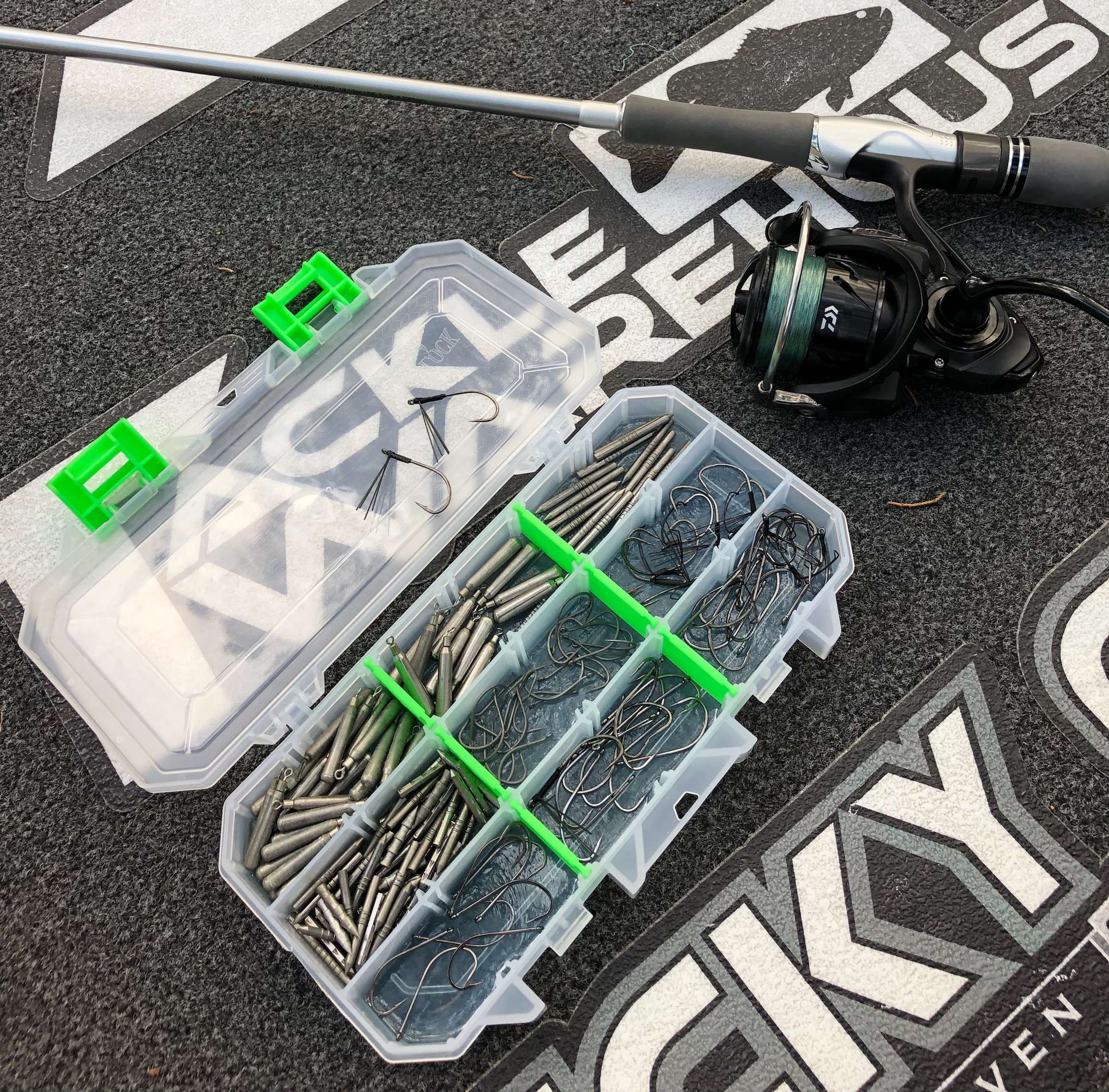
Fifteen or 20 years ago, the idea of finesse fishing for bass was considered to be a complex form of fishing that involved a lot tediousness.
First, there were a lot of different finesse techniques: doodling, dartheads, split-shot rigs, mojo rigs, drop-shot rigs, finesse jigs. Then each technique had a certain rod: a 6-foot, 6-inch medium action for this and then a 6-foot, 9-inch medium light action for that. Then there were the different sizes of fluorocarbons: 8-pound test on these two reels and 6-pound test on those two reels. And if you got a wind knot in any of them, it was an automatic re-spooling job that night. Then throw in the vast array of terminal tackle – all the different hooks and weights – finesse fishing back in those days was quite an ordeal.
These days I’m happy to say that finesse fishing has become the simplest of all fishing types for me. I’ve essentially narrowed my finesse fishing down to just a handful of techniques: drop-shots, wacky/Neko rigs, shaky heads and occasionally reeling a small swimbait. And thanks to major advancements in tackle, I can do most of these with one rod and a little miniature tacklebox.
Sometimes I get Bassmaster Marshals in the Elite Series that think I’m going to have this epic display of finesse tackle. They’re a little disappointed when I pull out one or two spinning rods and my little tackle box and tell them, there it all is, right there.
Without a doubt, the number one contribution to simplifying light tackle with spinning rods has been braid and fluorocarbon. The days of having to respool with 6- and 8-pound test each night are long gone. These days 95 percent percent of all my finesse fishing is done with Sunline 12-pound braid to either 6-pound or 8-pound test fluorocarbon leader. I use a Royal Polaris (RP) knot to join braid to leader. It’s an incredible fusion knot with very little bulk and superior strength. There are plenty of demos of this knot on YouTube.
The braid is always the same – 12-pound test – but I change the leader length and pound test rating depending on conditions. Being able to change the leader on the fly like that is a huge plus in simplifying tackle.
Next is the rod. I used to alternate between several different spinning rod actions and lengths for different finesse techniques. It drove me crazy shuffling between all those rods so I worked with Daiwa to design the perfect one-rod-does-all for finesse fishing: It’s my signature series Daiwa Tatula Elite AGS 7-foot, 1-inch medium action – I specifically made this rod to be a finesse multitasker. The reel I prefer on this rod is a Tatula LT 4000. The primary reason I like this reel is because it features a 6.3:1 reel ratio, which is pretty fast for a spinning reel. Now you’re probably thinking: I thought finesse techniques are supposed to be slow, so why such a fast reel?
With finesse techniques, fish are bad about taking the lure and running towards you with it, fast. This is particularly true with wacky rigs – they’ll streak out to the boat with the lure before you realize you’ve had a bite. When this happens, I prefer to have a reel that can take up line quickly to catch up to the fish before applying pressure for the hookset. With slower reels, I can’t reel up enough slack fast enough before setting the hook and the rod ends up way back over my head while I’m still reeling like crazy to get a hookset. A 6.2:1 reel has ended that problem for me.
This one rod, reel and line setup is all I need for any light-line finesse technique: shaky heads, wacky rigs, Neko rigs, Ned rigs, drop shots, reeling a little swimbait or grub, tubes for smallmouth – it simplifies everything.
Next time we’ll discuss terminal tackle.
Editor’s note: Read part 2.

